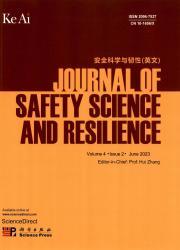CO-Mode with AV-CRM: A novel paradigm towards human–machine collaboration in intelligent vehicle safety
IF 3.4
Q1 PUBLIC, ENVIRONMENTAL & OCCUPATIONAL HEALTH
引用次数: 0
Abstract
With the continuous advancement in vehicle intelligence, enhancing safety has emerged as a key priority in intelligent vehicle research and development. Intelligent vehicles are currently limited in supporting autonomous or human-driven modes. This limitation becomes apparent in complex driving scenarios, where vehicle risk response capabilities are inadequate. This paper suggests that shifting from a single decision maker to a human–machine collaboration approach is a potential solution. However, current research on human–machine collaboration in intelligent vehicles primarily focuses on intelligent systems that assist the driver, rather than treating the driver and the system as equals. This approach overlooks the role of the driver in helping the system, lacks effective communication, and diminishes the sense of collaborative cooperation, all of which hinder the promotion of efficient, safe, and stable driving. Inspired by the aviation approach to risk management through Crew Resource Management (CRM), this study introduces the Collaborative Operation Mode (CO-Mode) for intelligent vehicles. Based on CO-Mode’s requirements for human–machine collaborative perception, decision making, and control, the Autonomous Vehicle Collaborative Resource Management (AV-CRM) is proposed. In addition, challenges and future perspectives are explored by analyzing the abilities and limitations of relevant technologies. The proposed AV-CRM redefines the relationship between drivers and intelligent systems, offering new insights into the safety of intelligent vehicles and their technological evolution.
基于AV-CRM的协同模式:智能车辆安全中人机协作的新范式
随着汽车智能化水平的不断提高,提高安全性已成为智能汽车研发的重点。目前,智能汽车在支持自动驾驶或人类驾驶模式方面受到限制。在车辆风险响应能力不足的复杂驾驶场景中,这种限制变得明显。本文认为,从单一决策者转向人机协作方法是一种潜在的解决方案。然而,目前对智能汽车人机协作的研究主要集中在辅助驾驶员的智能系统上,而不是将驾驶员和系统平等对待。这种方式忽视了驾驶员帮助系统的作用,缺乏有效的沟通,削弱了协同合作的意识,这些都阻碍了高效、安全、稳定驾驶的促进。本研究受航空风险管理方法(Crew Resource management, CRM)的启发,引入智能交通工具的协同运作模式(CO-Mode)。基于CO-Mode对人机协同感知、决策和控制的要求,提出了自动驾驶汽车协同资源管理(AV-CRM)。此外,通过分析相关技术的能力和局限性,探讨了挑战和未来的前景。提出的AV-CRM重新定义了驾驶员与智能系统之间的关系,为智能车辆的安全性及其技术发展提供了新的见解。
本文章由计算机程序翻译,如有差异,请以英文原文为准。
求助全文
约1分钟内获得全文
求助全文
来源期刊

安全科学与韧性(英文)
Management Science and Operations Research, Safety, Risk, Reliability and Quality, Safety Research
CiteScore
8.70
自引率
0.00%
发文量
0
审稿时长
72 days
 求助内容:
求助内容: 应助结果提醒方式:
应助结果提醒方式:


